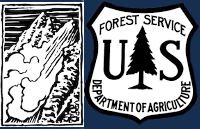A layer of faceted snow capped by new snow and wind deposited snow fractured producing a loud whumph and these cracks that would shoot over 50 feet from our ski tips. Any slope with wind blown snow produced these signs of instability in the Taylor Fork area, and we triggered an 8-12 inch deep avalanche when one slope propagated a fracture for 200ft.
Forecast link: GNFAC Avalanche Forecast for Sun Dec 13, 2009
